Have you ever wondered about the ancestry of the Collie? I certainly have, so I was delighted when University of Arizona Professor Felice L. Bedford contacted me asking if I would be interested in posting her article about Collies’ genetic origins on Collie Chatter. Naturally, I said, “Yes, please!”
Her words offer explanation for why many breeds seem so similar. The relation between Rough Collies and Shetland Sheepdogs may not be shocking, since many people already refer to Shelties as “miniature Collies.” (Not quite true, but not far off either.)
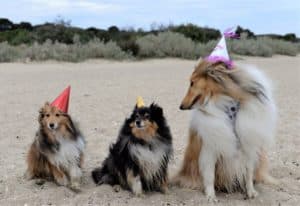
Anyone who knows their breed history may already be aware that Collies were originally more of a “type” before settling into several separate breeds. In fact, the first Collies to appear at a British dog show in 1870 were divided into categories of rough-coated collies (today’s Rough Collies), smooth-coated collies (now called Smooth Collies), and short-tailed collies (probable progenitors of modern Australian Shepherds).
But did you know that Collies have more than 10 near and near-ish relatives? If not, keep reading and prepare to be enlightened. Even if you’re a breed aficionado, the more distant Collie “cousins” may surprise you!
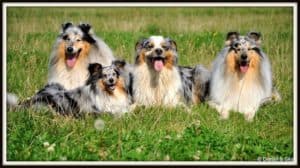
Six Degrees of Lassie: The Population Genetics of the Collie Dog
By Felice L. Bedford
Recent research on the genetics of dog breeds finds new information pertaining to the origins of our favorite furry friend, the Collie.
The Collie’s closest genetic relative is the Shetland Sheepdog. This may come as no surprise to you, because the Shetland wears the same luxurious fur coat as the Rough Collie. However, these types of overlapping traits often turn out to be superficial, arising independently in different breeds that are unrelated to one another. In this case though, the physical resemblance between the dogs turns out to be more than fur deep.
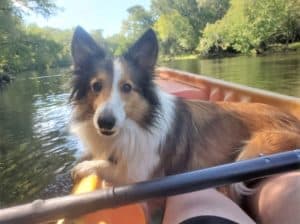
Thirteen additional breeds are found to be in the same genetic clade as the Collie. The closest cluster consists of the Australian Shepherd, Cardigan and Pembroke Welsh Corgis, Border Collie, Kelpie, Bearded Collie, Australian Cattle Dog, and the Old English Sheepdog. This means that every single Collie, Shetland, Corgi and so on in the world shares a common canine ancestor who lived just a few hundred years ago, much like how you share a great-great-grandparent from the 1800s with your cousins. A few hundred years is very recent in dog history compared to the initial domestication from wolves more than 10,000 years ago.
Beside perhaps a herding instinct, do breeds of the Collie clan have anything else in common from all their shared genetic variants? The more distant members of the UK rural clade (the official name of the Collie clan), for example, Greyhound, Scottish Deerhound, and Borzoi, are especially thought-provoking. Shared genes can produce common behaviors, physical features, diseases, or just be a silent remnant of common geographic origin. No one has really delved into that question yet for this big fifteen-member clan. Perhaps the next time you are missing a dose of Collie, you can try playing with, say, a Scottish Deerhound and see if anything feels familiar. Let me know!

In a presentation of the “Genealogy of Dogs” 60 years ago, before modern genotyping was possible, there were instead said to be three siblings of the Collie on the “family tree of 114 dog breeds,” the German Shepherd dog (now known to be distant), the Briard (also distant), and the Old English Sheepdog (remains a close cousin). Interestingly though, the German Shepherd dog does have a notable relation to the Collie; it turns out each is connected to the Australian Shepherd. This was found using a type of genetic comparison that I like to call Six Degrees of Lassie, named after the game Six Degrees of Kevin Bacon.
As with the connection to the German Shepherd dog, the most interesting findings about the Collie from genetic analyses may come from the Six Degrees of Lassie comparisons to breeds from other clades. A lucky Collie (or Shetland Sheepdog) was a founder of the Nova Scotia Duck Tolling Retriever. Thus, Collie’s genes live on in every member of that breed. In addition, intriguingly, the Collie shares a genetic variant with a very new breed of dog, the Chinook, and likely the very ancient rare breed, Xoloitzcuintli. The mystery of how gene flow came about has yet to be completely unraveled.
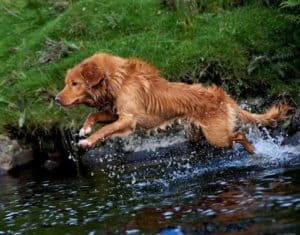
Interested in solving this and other Collie capers? DNA tests for dogs are now available commercially just like the popular tests for people that use saliva to discern genetic ancestry. Genetic tests can include autosomal DNA, the majority of DNA inherited from both parents, as well as mitochondrial DNA (mtDNA) that you and your pup get only from your respective human and canine moms. I have started extending my human mtDNA studies due in large part to my undeniable adoration for the Collie.

By Felice L. Bedford, Ph.D.
Reprinted from the newsletter of Collie Rescue Foundation of Southeastern Pennsylvania, Winter 2020. Copyright to F. Bedford, all rights reserved ©. Contact Felice L. Bedford for permission to reprint or with any questions, comments, or interest. All pictures were submitted by Collie Chatter readers unless otherwise indicated and do not appear in the original printing of this article. All links are also an addition by Collie Chatter.
Felice L. Bedford is a professor at the University of Arizona and author of the book All Cab Drivers Look Alike: The science of changing perception through experience. Research interests include perceptual learning, perception and well being, genetics in ancestry and health, mindfulness, and recently coronavirus. She got her degrees from University of Pennsylvania and her Collie from New Jersey. She hopes to get a rescued Collie soon.
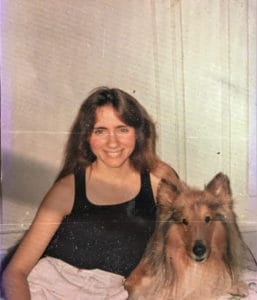
References:
Megargee, E. (1954). The Dog Dictionary (World Pub. Co).
Parker, H.G., Dreger, D.L., Rimbault, M., Davis, B.W., Mullen, A.B., Carpintero-Ramirez, G., and Ostrander, E.A. (2017). Genomic Analyses Reveal the Influence of Geographic Origin, Migration, and Hybridization on Modern Dog Breed Development. Cell Rep. 19, 697–708.
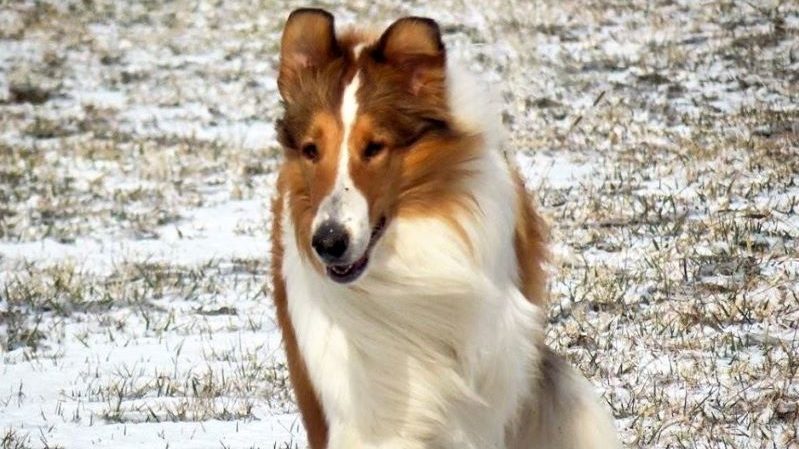
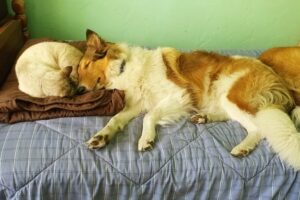

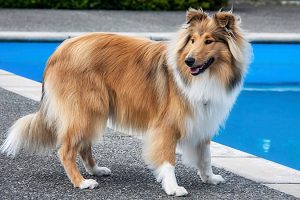

Nice to know all of this good news about our beautiful Collies …
I had a beautiful collie who would not run. But he hopped. Is this unusual? I had rescued him when he was 8 yrs old. That makes a difference. If I had raised this wonderful boy I would have watched him develop, but I did not have that opportunity. Thank you!
That would really be a good question to ask a veterinarian, as I am by no means an expert on canine health! ? Hopping can be a sign of joint issues like hip dysplasia or a luxating patella (unstable kneecap), but a vet exam would be necessary to know for sure. Do you have a dog now? Next time you’re at the vet, you might bring it up. Most vets are happy to answer client questions.
Thank you for rescuing am older dog! It’s so rewarding to give a good home to a dog in need. ♥️
I have a registered Old Time Scottish Collie and she came back 100 % Scotch Collie on a DNA test- she is one of a breed that was recreated from a handful of Scotch Collies crossed with Rough Collies and English Shepherds ( another Collie relative). She is amazingly smart and instinctively knows what I want.